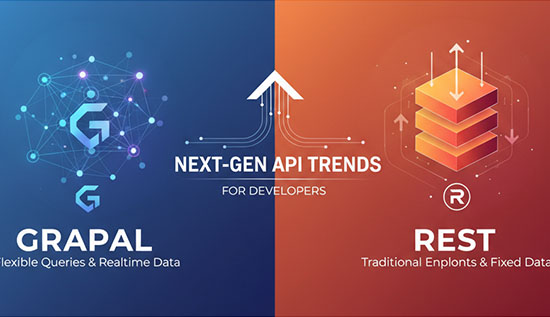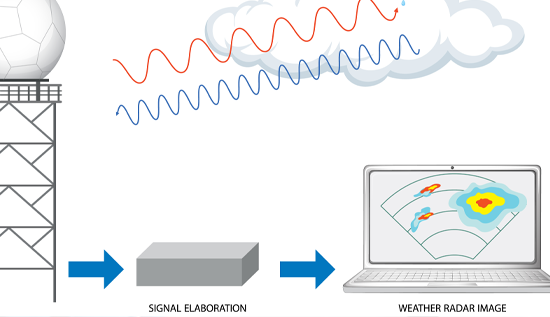Neural Network Programming Beyond Python: Rust & C++

Experience neural network programming beyond Python, powered by Rust and C++ ecosystems built for speed, safety, and large-scale deployment.
Python has been the most popular language for machine learning and deep learning for more than ten years. It became the language of choice for researchers, students, and workers thanks to frameworks like TensorFlow, PyTorch, and scikit-learn. Machine learning systems are getting closer to being used in real life, though. This has made people want faster, more reliable, and more predictable neural network programming beyond Python. Rust and C++ are two languages that are now at the front of this trend.
This article talks about the growing trend of machine learning without Python. It also talks about the ecosystem of Rust neural network libraries and C++ deep learning frameworks and shows writers how to code neural network coding in Rust and high-performance neural networks in C++. It also talks about why teams working on production-level systems are more and more interested in deep learning implementation in Rust/C++ and how to create neural networks in Rust and C++ either from scratch or by using tools.
Why Look for Neural Network Programming Beyond Python?
There's no doubt that Python has been successful, but as models get bigger, inference times become more important, and edge devices become more important, a number of its limits have become clearer. Because of these problems, a lot of engineers and experts are looking into neural network programming beyond Python:
1. Performance and Latency
Python is a Global Interpreter Lock (GIL) language that is read out loud. Libraries like NumPy depend on fast C/C++ additions, but Python itself still adds extra work. Lower-level languages are better for high-throughput, low-latency tasks like real-time inference, robots, industrial automation, and large-scale distributed training.
2. Memory Management and Predictability
Large systems often fail because of bugs in memory safety and bad buffer handling. C++ gives you strong but hard to use manual control. Rust, on the other hand, offers free abstraction and promises that are made at compile time that stop whole groups of memory errors.
3. Deployment Footprint
It is not always possible for embedded systems, microcontrollers, and small inference servers to come with a full Python runtime. This has increased the need for machine learning without Python, which has led coders to build models in compiled languages that work better with limited hardware.
4. Full-Stack Integration
When AI parts need to work with native software layers that are written in C++, Rust, or other low-level languages, switching between Python and other languages slows things down. These problems are fixed by native deep learning code.
Because of these factors, more and more businesses and open-source groups are using deep learning implementation in Rust/C++ to make machine learning solutions that can be used in production.
Rust Neural Network Libraries: Modern Safety Meets High Speed
Rust is quickly becoming a favorite among system writers who want fast code that is also safe. The memory model, concurrency guarantees, and zero-cost abstractions in the language make it perfect for apps that need to do a lot of computation, like neural networks.
The ecosystem of Rust neural network libraries is still pretty new but it's growing very quickly. Some choices that stand out are:
1. Burn
Burn is a modern and flexible deep learning system written in Rust. It works with different backends, like WGPU, CUDA, and even CPU-only modes, so writers can easily run models on either the GPU or the CPU. It was made with safety, flexibility and expandability in mind.
2. Tch-rs
tch-rs gives you a way to use PyTorch's reasoning and training features in Rust. It does this by using the LibTorch C++ API. This is a good choice for writers, who want to use Rust but still want the performance benefits of C++.
3. Linfa
Linfa supports classical machine learning methods which makes it useful for situations that need machine learning without Python. It's often called "the scikit-learn of Rust."
4. ndarray + custom neural network code
The ndarray module in Rust has structures that are similar to NumPy and can be used to build the mathematical foundations of neural networks from scratch. It is easy to learn how to build neural networks in Rust and C++.
These libraries make it easy for developers to practice neural network coding in Rust. Because Rust provides memory safety, performance can be improved without worrying about adding bugs that corrupt memory.
C++ Deep Learning Frameworks: The Backbone of High-Performance AI
C++ has been the quiet engine behind most of the big deep learning frameworks for years, while Rust is the new star. C++ is used by TensorFlow, PyTorch, ONNX Runtime, and MXNet so that they work well and can be moved around. A lot of teams use C++ deep learning frameworks, when they are making performance-critical apps, not just for internal implementation.
Here are some of the most important frameworks:
1. LibTorch
The PyTorch C++ API is called LibTorch. When you don't want to use Python or can't, LibTorch gives you the same autograd system, tensor structure and inference tools in C++.
2. TensorFlow C++
The C++ API for TensorFlow lets writers load SavedModels, run inference and make their own operations without having to use Python. A lot of people use this for large-scale production reasoning.
3. ONNX Runtime C++
With hardware acceleration, ONNX Runtime has very fast inference speed, and its C++ API lets it be used on servers, desktops, and edge devices.
4. tiny-dnn
A C++ library with only header files that is made for small neural networks, embedded systems, and classroom use. Great for deployments with small tracks.
These choices show why many engineers like using high-performance neural networks in C++, especially for business uses that need stable delay, memory management, and built-in support for the native runtime. They are also the building blocks of the rust and C++ libraries for neural network programming, which coders use when Python gets too slow.
Neural Network Coding in Rust: A Practical Overview
If you want to learn how to neural network coding in Rust, look at this example workflow:
1. Tensor Operations
Developers can do activation functions, gradient operations and matrix multiplications with ndarray or Burn's tensor module.
2. Model Definition
Rust's trait system, lets you make layers that can be used again and again. One example is a fully connected layer that might use a Layer trait with a forward function.
3. Training Loop
The predictable memory management in Rust helps make sure that training loops work without any unexpected problems. Burn automatically handles autograd; with ndarray, writers can set up backpropagation by hand.
4. Deployment
Rust binaries only need one executable and don't need any other files to work which is great for machines that don't have Python. This process is, like machine learning without Python. It lets developers make systems that are fast, safe and don't use a lot of resources all in Rust.
High-Performance Neural Networks in C++: Why They Matter
Most machine learning systems that are good enough for production use C++ in the end, even if they were first prototyped in Python. There are several reasons why some companies need to be able to build high-performance neural networks in C++:
1. Maximum Control Over Resources
C++ gives programmers exact control over memory and hardware which lets them make tensor operations, thread pools, and GPU kernels work better.
2. Latency-Critical Applications
Inference speeds of less than one millisecond are often needed for robots, self-driving cars and financial trading systems. Python's extra work is not acceptable in such challenging settings.
3. Integration With Native Software
When AI parts, need to work in big C++ codebases using Python would mean dealing with complicated links. It's just easier to use native C++.
4. Embedded and On-Device AI
An embedded gadget that is used for deep learning often can't handle a full Python runtime. For distribution, teams instead use small C++ libraries or ONNX Runtime.
Because of these benefits, a lot of businesses use neural network programming beyond Python by putting inference engines in C++ directly, especially for real-time tasks.
Deep Learning Implementation in Rust/C++: Techniques and Patterns
More and more people are using Rust and C++ together. Many businesses see Rust as a safe systems language for managing things at a high level while C++ is used for computing and graphics hardware. When put together they make strong tools for deep learning implementation in Rust/C++.
Patterns often have:
1. Rust Front-End + C++ Backend
C++ libraries do the heavy math, while Rust takes care of program logic, API servers, and concurrency. Bindings like C++ make collaboration easy.
2. C++ Core with Rust Safety Wrappers
Rust is used to wrap C++ deep learning frameworks in apps, that need to be safe. This method lowers the risk of memory problems, while keeping the raw speed.
3. Portable Inference with ONNX
A lot of teams send learned models to ONNX and then use the Rust or C++ APIs in ONNX Runtime to load them. This makes neural network programming beyond Python.
4. Hybrid Training Setups
Even though research may start in Python, final production systems use Rust or C++. This is becoming a more normal way of working.
These design patterns show how developers use the Rust and C++ libraries for neural network programming in a lot of different ways.
How to Build Neural Networks in Rust and C++: Conceptual Steps
Building a neural network is based on the same basic ideas whether you use Rust or C++:
1. Implement or Import Tensor Operations
The most important parts of any neural network are matrix multiplication, element-wise activation functions, convolution and normalization processes.
2. Create Layer Modules
It says what each layer (dense, convolutional, recurrent, etc.) does:
- specifics,
- forward pass,
- gradient computation (if it can be used for training).
Autograding is taken care of by libraries like Burn in Rust and by LibTorch, or TensorFlow in C++.
3. Define the Model Architecture
To do this, layers are put together to make a bigger system, like a CNN, RNN, or transformer.
4. Build the Training Loop
What the loop does:
- forward pass,
- figuring out the loss,
- downward pass,
- Updates to parameters.
Developers can fully control memory and parallelism in either Rust or C++.
5. Deploy the Model
It's easy to install binaries, even on edge devices, because they are small. This makes the case for machine learning without Python even stronger.
Tutorials on how to build neural networks in Rust and C++ show writers who want full control how to do these steps from scratch or by using libraries that are already out there.
Advantages of Using Rust and C++ for Deep Learning
While Python is great for study, Rust and C++ are much more reliable, and efficient, especially for production work. Here are some important benefits:
1. Performance
It is much easier to use compiled languages, and they can be tweaked all the way down to the hardware level. This is necessary for high-performance neural networks without Python.
2. Safety (rust)
At build time, Rust gets rid of memory errors. This is very helpful for AI that needs to be safe, like self-driving cars, drones and industrial tools.
3. Control
Memory sharing, data structures, CPU/GPU parallelism, and threading models can all be fine-tuned by developers.
4. Flexibility in Deployment
You can run standalone binaries on embedded systems, computers, cloud instances, and Internet of Things (IoT) devices.
5. Strong Integration With Existing Systems
A lot of software environments, like game engines, robotics systems and database engines, are written in C++ or Rust, which makes it easy to combine them.
These strengths explain the growing acceptance of advantages of using Rust and C++ for deep learning among engineering teams worldwide.
Rust and C++ Libraries for Neural Network Programming: A Summary
The combined ecosystems of Rust and C++ offer a broad landscape of tools, including:
- Burn (Rust)
- Tch-rs (Rust)
- Linfa (Rust)
- Ndarray (Rust)
- LibTorch (C++)
- TensorFlow C++ (C++)
- ONNX Runtime (C++)
- tiny-dnn (C++)
These ecosystems empower developers to build high-performance neural networks without Python, using languages tailored for speed, memory safety, and long-term maintainability.
The Future of Neural Network Programming Beyond Python
As engineers who work on deep learning look for better performance and safer deployments, Rust and C++ will continue to become more common. This trend is moving faster now that there are specific Rust neural network libraries and mature C++ deep learning frameworks.
Long-term, companies that need the fastest speeds, most stable delay, and safe memory management will choose neural network programming beyond Python more and more, especially when putting models into production.
The path to high-performance neural networks in C++ and neural network coding in Rust is well under way. This can be seen in custom kernels, ONNX Runtime deployments, or full-stack Rust and C++ apps. Developers don't have to use the Python runtime to make machine learning systems that work well, are stable, and have low delay. They have more tools than ever before.
So, using deep learning implementation in Rust/C++ is no longer seen as strange; in fact, it is seen as one of the most promising directions for the next generation of AI infrastructure.
Read More: What is artificial neural network and why it is used for?
More Articles
 20 Nov 2025
20 Nov 2025
GraphQL vs REST: Next-Gen API Trends for Developers
Compare GraphQL vs REST to optimize API performance, scalability and modern application design with best practices for developers.
 19 Nov 2025
19 Nov 2025
Swarm Robotics in Agriculture & Logistics: Smart Automation
Swarm Robotics in Agriculture & Logistics enhances automation, efficiency, and smart coordination across modern farming and logistics operations.
 19 Nov 2025
19 Nov 2025
Ultra-Low Latency Networks for VR/AR: Optimized Performance
🚀 Discover how Ultra-Low Latency Networks for VR/AR are transforming real-time experiences with 5G, edge computing, and seamless data transmission.
 18 Nov 2025
18 Nov 2025
DAO Governance Trends: Evolving Models & Best Practices
Thorough analysis of DAO Governance Trends highlighting upgraded governance systems and evolving models shaping decentralized organizations today.